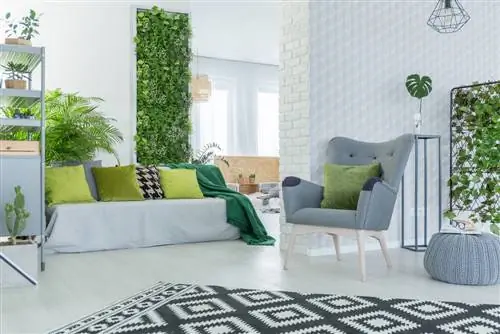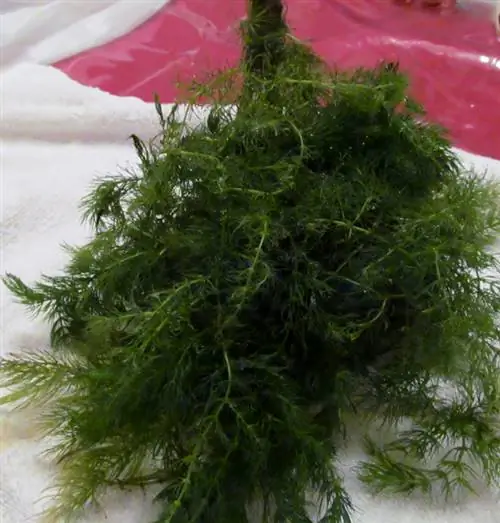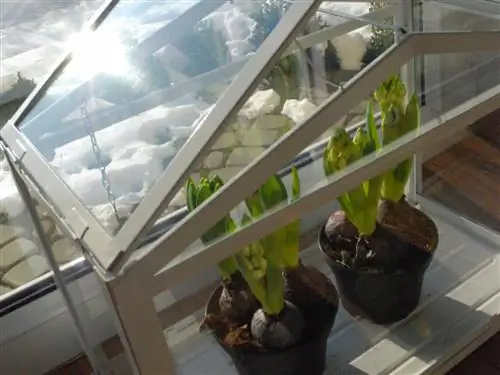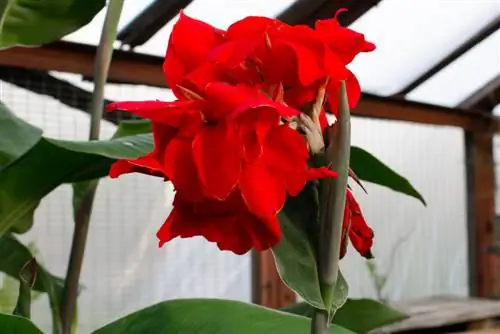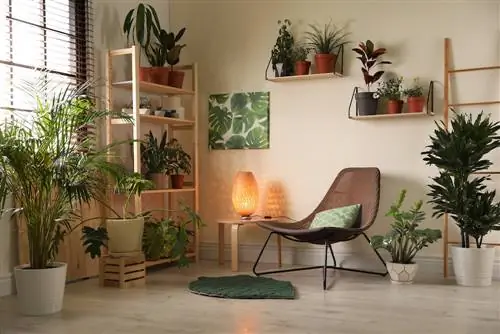- Author admin [email protected].
- Public 2023-12-25 17:45.
- Last modified 2025-01-23 11:21.
Vertical gardens can be created both indoors and outdoors. Inside, they ensure a pleasant room climate and increase the oxygen content. Green walls also have a calming effect on the eyes and the mind. Find out below what to look out for in a vertical indoor garden and which plants are suitable.

What options are there for an indoor vertical garden?
For a vertical indoor garden, stacked flower boxes, shelves, plant bags, vibrant picture frames or hanging planters are ideal. Suitable plants are ferns, mosses, bobheads, spider plants, money plants, pubic flowers, bamboo and herbs.
Construction types for indoor vertical gardens
If you want to create a completely green wall, the wall should be protected with a waterproof layer. However, there are other, less complex types of construction that do not require this measure:
- flower boxes stacked on top of each other
- Shelves attached one above the other with plants close together
- Plant Bags
- “lively” picture frames
- Hanging plants in jars, cans and flower pots on the wall (instructions here)
- Line pallets with foil and plant (instructions here)
These plants are suitable
In principle, you can of course use any houseplant for your vertical garden. However, plants that grow bushy, hang or climb are often used for wall gardens so that it appears as dense as possible. Flowering plants are rarely processed. Here are a few ideas:
- Maidenhair fern and other ferns
- Moose
- Bubikopf
- Green Lily
- Efeutute
- Shameflower
- Bamboo
- Herbs for the edible vertical garden
When creating a vertical garden, it's not just about choosing the right plants but also about their arrangement. We have put together some nice ideas for you here. Also make sure that the neighboring plants need a similar amount of water.
Indoor Wall Garden Watering
Prefabricated vertical gardens from specialist retailers are usually equipped with automatic irrigation (€17.00 on Amazon), in which water trickles down from above continuously or at certain times of the day, thus watering all the plants. Such a sophisticated system can only be built to a limited extent if you build it yourself. For example, you can place a water hose in your plant boxes, fix it and poke several small holes in it. However, you should work very carefully so that no water flows next to it. To water, simply connect the hose and turn on the tap for a few minutes.
Lighting of vertical garden indoor
Vertical gardens not only brighten up a living space during the day, they can also have a beautiful effect at night - especially when they are illuminated. Spotlights aimed at the wall are one solution, another is to install waterproof fairy lights or individual lights into the wall so that the green wall lights up from within. Solar lights, like those that you put in the garden, would also be conceivable. If your wall garden is in a darker part of your home, you can support the growth of the plants using UV light lamps.
Indoor Wall Garden Care
Like all gardens, a wall garden takes work. You should:
- water regularly.
- Check regularly for leaks.
- remove dried or dead plant parts.
- fertilize every few months.
- React quickly to pests and diseases and remove or quarantine diseased or infected plants.
- prune or replace plants that have become too large.

